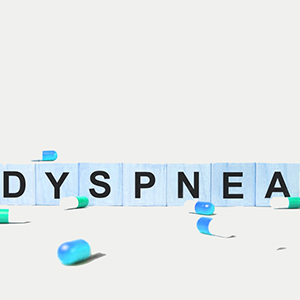Home-based unsupervised pulmonary rehabilitation program improves the respiratory disability in systemic sclerosis patients with dyspnea: an observational prospective study

All claims expressed in this article are solely those of the authors and do not necessarily represent those of their affiliated organizations, or those of the publisher, the editors and the reviewers. Any product that may be evaluated in this article or claim that may be made by its manufacturer is not guaranteed or endorsed by the publisher.
Authors
Dyspnea is a common symptom in systemic sclerosis (SSc) that considerably decreases patients’ quality of life (QoL). Pulmonary rehabilitation (PR) mitigates dyspnea impact on daily activities. The aim of this study is to evaluate the effect on respiratory disability of home-based PR in SSc patients with dyspnea. In this observational prospective monocentric study, we screened all dyspneic SSc consecutive patients attending the Rheumatological day hospital in the University hospital of Parma from January 2019 and June 2019. The aim of our study was to understand if a PR unsupervised home-based program could improve respiratory disability in this specific population. Dyspnea was evaluated with the self-administered questionnaires modified Medical Research Council (mMRC) and Saint George's Respiratory Questionnaire (SGRQ). Patients also filled in Short Form 36 (SF36) and the Modified-Health Assessment Questionnaire for SSc (HAQ-MOD). Health Professionals assessed and trained the patients and collected data before PR and at the end of the program. PR consisted in 5 weekly unsupervised sessions for 8 weeks. Wilcoxon test for paired data evaluated the changes after PR. p<0.05 was considered statistically significant. 46 SSc patients were included (43 female). Only 31 (29 female) performed PR as planned (Adherent Group-AG) while the others gave up within the first week (Non-Adherent Group-NAG). All SGRQ domains (symptoms: from 30 to 18; p=0.0055; activity: from 47 to 35, p=0.23; impact from 29 to 25, p=0.044) and SGRQ total score (from 35 to 29; p=0.022) improved in AG. SGRQ scores did not change in NAG as well as SF36 and HAQ-MOD in both groups. The home-based PR program dramatically decreased the effect, frequency and severity of respiratory symptoms. Conversely, it slightly changed the activities causing breathlessness and dyspnea-related social functioning disturbances. PR appears to be a useful tool in treatment strategies aiming to achieve a QoL improvement in SSc patients.
How to Cite

This work is licensed under a Creative Commons Attribution-NonCommercial 4.0 International License.






